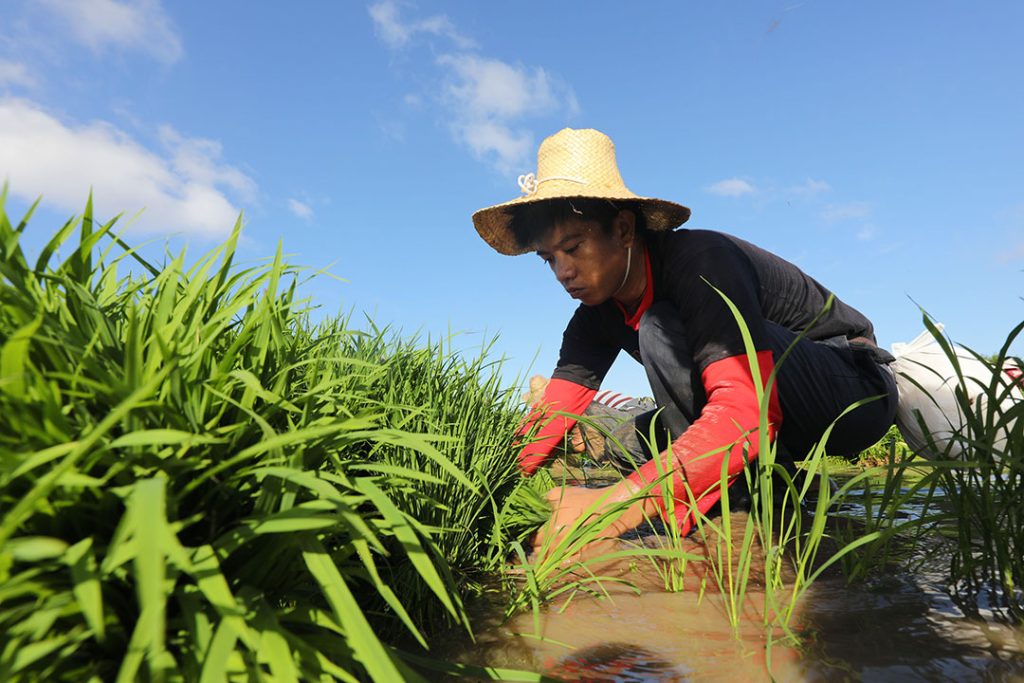Tags
From farmers to importers: how Filipino rice growing went wrong

MANILA\ (Thomson Reuters Foundation) – Alex Quinones has been a rice farmer in the Philippines for almost five decades – last summer was the first time his field dried up, forcing many of his neighbors to swap farm life for street sweeping.
“We were not able to harvest any rice. This drought was unlike anything we experienced before,” Mr. Quinones, 62, told the Thomson Reuters Foundation from his farm in Oriental Mindoro province, southwest of Manila.
Farm groups blame a dangerous cocktail of high imports, low trade prices and an ill-planned subsidy scheme for crippling the rice sector, pushing many small growers out of business.
Mr. Quinones leads an association of about 300 local rice farmers and said some had now become builders, street sweepers and waste pickers just so they could eat or pay off debts.
Along with fast-changing weather patterns, he said a deluge of foreign rice – imports have risen by nearly 60% since 2020 – has also hit income in recent years, with traders buying local rice near production costs.
The government said the El Nino phenomenon had cost the farm sector 9.5 billion pesos ($161.70 million)in damages as of May, as climate change slashed rice production.
Although one in four Filipinos work in farming, the country has now become the world’s top importer of rice, according to the United States Department of Agriculture.
To feed its population of more than 113 million, the country lifted a cap on rice imports five years ago, imposing tariffs of 35% to 40% to cushion the new, competitive blow.
The country is projected to import a record 4.7 million metric tons of rice this year, rising to 4.9 million metric tons in 2025, surpassing major importers such as China, Indonesia, the European Union, Nigeria and Iraq.
But farmers’ groups said the high imports and a lack of disaster aid had displaced farmers, trapped rice growers in poverty and left the country dependent on foreign food.
“It’s high time to junk the law that for the last five years had consistently failed our rice farmers and consumers”, said Cathy Estavillo, who represents a local group of peasant women and the rice watch group Bantay Bigas.
Super Typhoon Enteng, the Philippines‘ fifth tropical cyclone this year, caused more than 2.2 billion pesos in damage to agriculture and livestock, affecting over 59,000 farmers and 37,000 hectares of agricultural land.
In the Bicol region, in the northern part of the country, rights group said about 90% of rice farms that were then ready for harvest was damaged by September’s typhoon.
Ms. Estavillo said farmers hit by this run of climate disasters had yet to receive any government compensation.
IMPACT ON FARMERS
The Rice Tariffication Law was supposed to help Filipino farmers by channeling import taxes into a Rice Competitiveness Enhancement Fund (RCEF) worth 10 billion pesos a year.
The fund aimed to finance new farm machinery, seed development and propagation, among other initiatives.
But Filipino farmers lost an estimated 90 billion pesos during the first year of the new law, data from the National Federation of Peasant Women in the Philippines shows, as traders pushed down prices on the back of all the new imports.
During this period, farmers earned barely half the cost of living.
In Nueva Ecija, once the nation’s rice basket, many farmers went into bankruptcy as prices for rice tanked to new lows.
LOCAL PRODUCTION
Last year, the government reaped a record 30 billion pesos in tariffs on imported rice – money that advocates said did little to help struggling Filipino farmers.
Under the law, Manila allots 5 billion pesos a year for cooperatives, associations and local government units to buy agricultural equipment.
As of March, Manila said it had delivered over 26,000 units of agricultural equipment, benefitting a million farmers.
But Ms. Estavillo said many small-scale farmers were not part of cooperatives or groups so were excluded from the distribution.
“A bigger number of farmers still rent tractors and harvesters. The 10 billion a year is not enough to slash the cost of rice production to 50%’, said Ms. Estavillo.
Farmers also complained of insufficient fertilizer handouts, and of seeds being distributed too late or too old.
“In reality, the tariffs that ideally should be returned to farmers through machines, fertilizers, and pesticides to lower their production costs were not significant and failed to make them competitive,” said Ms. Estavillo.
In comparison, Thailand last year approved 55 billion baht ($1.60 billion) of support for its rice farmers: seven times the amount pledged to their Filipino counterparts.
Ms. Estavillo said about 100,000 farmers had signed a petition urging the government to scrap the law, strengthen rice production and help farmers earn a decent income.
With nothing to harvest, farmers like Quinones now struggle even to take out loans to finance the next planting season in June – putting all his future earnings into jeopardy.
“The government promised to loan us 35,000 pesos each for production. Until now, we have not received anything from them and we don’t know how to start over,” he said. – Reuters
https://www.bworldonline.com/agribusiness/2024/11/08/633700/from-farmers-to-importers-how-filipino-rice-growing-went-wrong/Published Date: November 8, 2024






